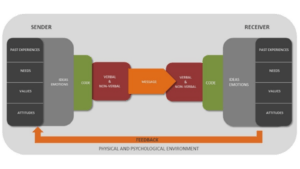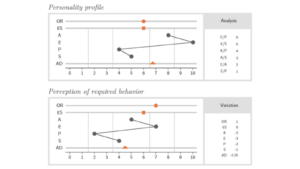The person is great, but not for the position you wanted to fill
How can you improve your hiring process as well as employee retention?
Have you ever had this happen to you? You receive dozens of resumes for a position you are trying to fill. You go through them, and one immediately stands out. The candidate goes through your interview process and passes with flying colors. A few weeks later they are in their position and within a month or two, you realize that they are not going to work out. The person is very good, but not for the position you wanted to fill.
Here is another scenario: you have an employee that you are very happy with and is doing a super job. Suddenly, they give their notice, saying they are no longer happy with their position and want a job that will challenge them more or that the position is too much for them and they can no longer handle the stress.
We see and hear about these scenarios time and time again. This is where psychometric testing can greatly help with hiring and employee retention on Talent Management.
The hiring process structure
In our formalized hiring process, one of our preliminary steps after creating the job description is to create what we call a “job profiler.” That is, by answering a series of questions, we identify what would be the ideal psychometric profile for the job in question. Our second step is to identify a dozen or so key talents (or competencies) that are crucial for the position.
Now we have the basis to get ready for the interview process. From here, we will tweak our interview questions to reflect what we are looking for in an ideal candidate for the position. Yes, we do still have some generic questions, but some are tailored to identify certain traits and competencies.
For example, if it’s a position requiring a lot of flexibility, we might ask: Tell us about a situation in which you had to change your priorities or planning due to a decision made by your superiors. How did you feel about this? Did you object or push back?
Once we have completed our interviews, we can then compare the interview answers against the candidates’ psychometric profile as well as the “profiler” we created for that specific position.
We are no longer basing our decision on gut feeling based on the interviews and on the interviewee having given a good impression, but also on scientific data.
This becomes very useful, especially when we have two or three high-potential candidates. You can use the tool to compare all profiles with the profiler and make your decision based on best fit.
Using these types of tools will automatically increase your chances of improving your employee retention rate by having the right person in the right position from the start.
How Psychometric Testing Helps Improve Employee Retention
So you’ve found the right person for the position. Now what? Psychometric tests can also be used to measure an employee’s satisfaction (and engagement) at work. In other words, don’t limit yourself to using these types of tests during the hiring process only.
You can occasionally, or in certain problematic situations, ask an employee to take the psychometric test again, but this time based on their perception of what is required for the position they currently hold instead of answering with the general idea of describing themselves.
Discrepancies between the employee’s personality traits and their perception of the position will tell you whether the person is either overqualified for the position or bored with the position, or if they are overwhelmed and the position has become too much for them.
On the other hand, if there is a close relationship between the two, there is a greater chance that the employee is happy with current position.
Using the employee perception section of psychometric profiles on a regular basis will allow you to monitor employee satisfaction and engagement and take action instead of being surprised when people leave due to other problems at work.
An adapted communication thanks to the understanding of their motivations
By analysing psychometric profiles between a group of employees, you can also greatly improve communication within the groups which again will help improve employee satisfaction and retention.
The communication component allows managers to understand employees’ needs and what motivates them, and they can adjust their management style accordingly.

You can use this information to adapt your communication style to each person’s specific traits and needs. You will notice that some employees will only need a general amount of information and will go with it, while others need more details or the reasons why.
Analysing psychometric results will also help you get a global view of all players within a group and understand the team’s dynamics: you can see how they will potentially react to each other simply because they have different personality traits. Some will immediately click while others will be in constant conflict. Knowing this ahead of time will help greatly in conflict management.
In conclusion
Remember, psychometric testing is not just for the hiring process. Use them regularly to measure employee satisfaction and identify potential conflicts.
Knowing your employees and how they will react to certain conditions is a major step towards improving employee retention issues.
Leave a comment below letting us know what you think.



